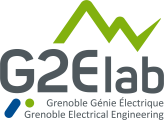
Abstract:
Over two decades of technological progresses in growth quality, doping control and device processing have led to the emergence of new potentialities for power electronic applications. As diamond represents the ultimate semiconductor owing to its superior physical properties, efforts have been conducted to develop various electronic devices, such as Schottky diodes, field effect transistors, bipolar transistor, p-i-n junctions...
As a prerequisite to the development of new generation diamond power devices, on one side, is the development of simulation tools able to anticipate the device electrical properties as well as its architecture in order to take full advantage of the material physical properties. On the other hand, experimental study of the gate contact, the second building block of the transistor, is fundamental in order to develop high performance devices. In this regard, one can consider several open questions: (i) Are the simulation tools able to take into account the specificities of diamond to model electrical devices? (ii) Is the aluminum oxide suitable to develop a MOSFET gate contact? (iii) If so, is the oxide/diamond interface of good enough quality? (iv) Is the fabrication of a diamond MOSFET a technological issue?
This PhD project, attend to answer these questions and pave the way towards the inversion mode MOSFET.
Emphasize on the diamond physical properties will help to understand why this material is the ultimate WBG semiconductor. State of the art diamond devices will be presented focusing on field effect transistors. A complementary topic for the development of new generation diamond power device is the anticipation of device electrical properties and architecture through finite element base simulation software. Thus the need for reliable simulation tools will be presented.
On one hand, the main models implemented in the simulation tools will be presented and emphasize on the diamond electrical properties will be given. For the simulation of diamond metal-oxide-semiconductor field effect transistor (MOSFET), the study of two building blocks is required: the p-n junction and the gate contact. The later ideal properties will be presented while the former will serve as a basis for the calibration of the physical parameters implemented in the finite element based software. Generation-recombination models influence on the simulated p-n junction electrical properties will be discussed. Finally, the simulation of the electrical properties of a diamond metal-oxide-semiconductor field effect transistor (MOSFET) will be shown.
On the other hand, focus will be made on diamond metal-oxide-semiconductor capacitor (MOSCAP) fabrication and electrical characterization. Specifically, the interfacial band configuration of the Al2O3/oxygen-terminated diamond (O-diamond) has been investigated using X-ray photoelectron spectroscopy. The results allowed establishing the band diagram of the Al2O3/O-diamond heterostructure. Then, the electrical properties of the diamond MOSCAP will be shown. Specifically, investigation of the interface states density revealed the pinning of the Fermi level at the interface between the Al2O3 and the O-diamond. Moreover, the leakage currents through the Al2O3 layer will be discussed in terms of temperature dependent trap assisted tunneling of holes from the diamond layer to the top gate contact. Finally, the electrical characterization of the first diamond MOSFET, performed at the National Institute for Advanced Industrial Science and Technology (AIST) in Japan, will be presented. Even if this first attempt was unsuccessful, it is promising for the development of diamond MOSFET since the demonstration of the actual realization of the device is clearly established.

